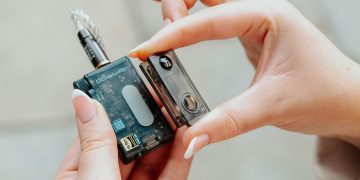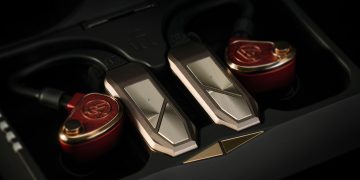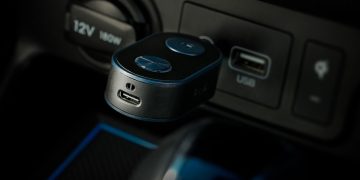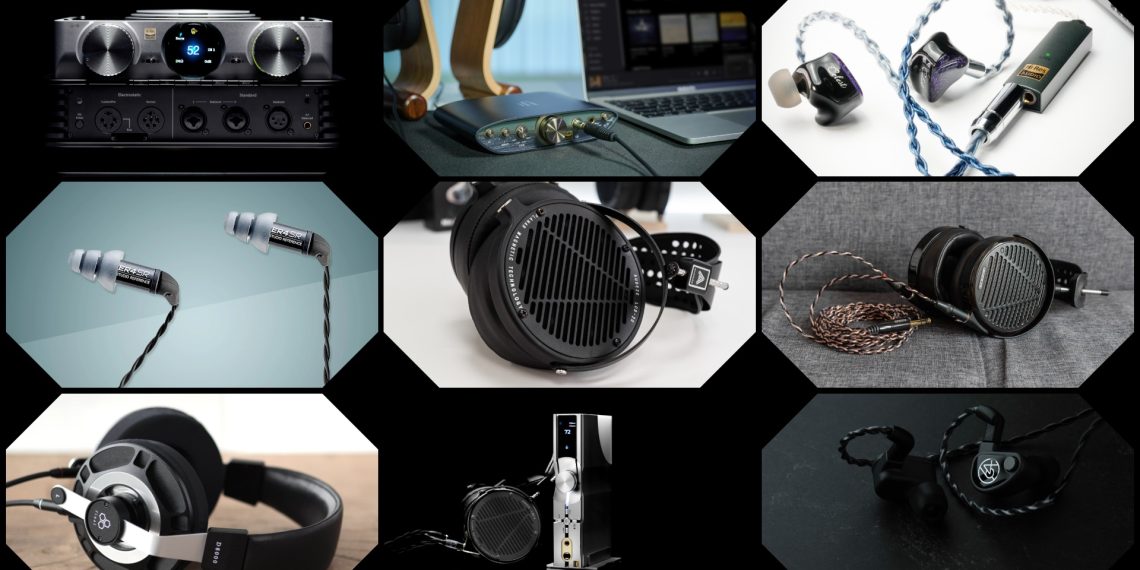![]()
 Compared to giant PA stacks at festivals and floor standing HiFi Speakers, headphones and earphones look small and harmless. But what matters is how much the sound makes your eardrums vibrate. In fact, most earphones can produce a louder sound at the eardrum than all but the largest and most powerful studio monitoring loudspeakers, and can easily give noise exposures well above the accepted safety limits.
Compared to giant PA stacks at festivals and floor standing HiFi Speakers, headphones and earphones look small and harmless. But what matters is how much the sound makes your eardrums vibrate. In fact, most earphones can produce a louder sound at the eardrum than all but the largest and most powerful studio monitoring loudspeakers, and can easily give noise exposures well above the accepted safety limits.
Earphones don’t sound as loud as loudspeakers even when the sound level at the eardrum is the same. This may happen because the brain isn’t fooled into thinking the sound is “outside” – it can work out that that the music is right next to your head and so expects it to sound loud and compensates.
Unlike loudspeakers neighbours will not complain if kids are listening at high volumes, with earphones people can get an excessive dose of sound without themselves or anyone else realising it! You can’t assume that equipment made for the domestic market will be safe to do a lot of listening. A 2010 study found that an iPod Nano set on maximum volume, using the standard ear-buds, produced a one-hour average sound level of 96 dB with a popular album, a higher average than is allowed in the workplace.
Should MP3 player use be limited?
Noise-induced hearing loss can be caused by two types of noise. Sudden bursts, such as firearms and fireworks, can immediately cause hearing loss in children, who are often reluctant to report such exposures to their parents. The other type is continuous exposure to loud noise, which can damage the ears over time. Sources of continuous noise include motorized recreational vehicles, loud sporting events, power tools and amplified music.
Although the maximum volume limit is adjustable on many current MP3 players you cannot be certain children will not disable this function. A survey sponsored by the Australian government found that about 25 percent of people using portable stereos had daily noise exposures high enough to cause long term hearing damage. Further research from the Netherlands reports that 90 percent of adolescents listened to music through earphones on MP3 players, almost half used high-volume settings, and only 7 percent used a noise limiter.
Medical Studies
Researchers at Boston Children’s Hospital determined that listening to a portable music player with headphones at 60 percent of their potential volume for one hour a day is relatively safe. For continuous noise exposure such as music, the level and duration of exposure are important. It takes repeated exposures over many years to cause a gradual onset of noise-induced hearing loss in both children and adults
Portable music players have sparked recent concern since they are used frequently and with earphones that deliver the sound directly to the ear. This is however not the whole of the story as the MP3 player used is not the only factor in deciding the actual volume at the ear. Headphones themselves have an electrical resistance, the higher this resistance the lower the volume outcome for the power of the MP3 Player. Choosing Headphones correctly can stop hearing damage from occurring at all.
MP3 players were investigated thoroughly by Portnuff, a graduate student at the University of Colorado, and Fligor, Director of Diagnostic Audiology at Children’s Medical Hospital and Harvard Medical School in Boston.
Portnuff and Fligor measured specific sound levels that come out of five common portable music players including the Apple iPod, the Creative Zen Micro and the SanDisk Sansa. For each player, they measured sound levels in music transmitted by several different types of headphones. Interestingly, they found that all five music players output very similar sound levels, especially at the highest volume levels. The highest volumes can be so dangerous that the researchers only recommend listening at those levels a few minutes a day, if at all.
“Damage to hearing occurs when a person is exposed to loud sounds over time…the risk of hearing loss increases as sound is played louder and louder for longer durations.” explains Portnuff.
“It is important to note, though, that not everyone shares the same risk of hearing loss,” Portnuff explains. Some people have “tougher” ears, for them the recommendations are overly cautious. For other people with more “tender” ears, these recommendations do not eliminate the risk of hearing loss.
Do speech and music affect hearing differently from industrial noise?
Many people find it difficult to believe that listening to music can be a hazard to hearing. But there’s little evidence that loud music, however harmonious, is actually safer than unpleasant noise that would measure the same on a sound level meter. So far as the law protecting people at work is concerned, loud music or speech is just another hazardous noise. Speech on earphones can give an excessive noise dose, just as much as music so when people are working with reproduced sound, safety must be taken seriously.
Noise and the causes of hearing loss?
The American National Institute on Deafness and Other Communication Disorders reports approximately 28 million Americans have lost some or all of their hearing, including 17 in 1,000 children under age 18. Overexposure to noise can cause both temporary and permanent hearing loss, sadly very little has been reported on the risk of such hearing loss in children.
Very loud sounds damage the inner ear by damaging the hair cells of the cochlea. When loud sounds are exposed to the ear for a short time, one may experience what’s called a temporary threshold shift, or a temporary hearing loss. This hearing loss may be accompanied by tinnitus (a ringing in the ears). One may recover from the temporary loss. But if the ear is exposed to loud sounds over longer periods of time, the hair cells can be permanently damaged, causing permanent sensorineural hearing loss.
Effects on preschool Children and School age Children
The following effects on preschool children and schoolchildren have been
considered by researchers from around the world:
-Hearing impairment
-Effects on sleep
-Stress-related somatic effects
-Cognitive effects
-Vocal nodules
Noise-induced somatic effects (such as on blood pressure and hormone levels) can best be considered as part of a stress response of children to their noisy environment.
Psychological and cognitive processes also play a role in this stress response of children. Somatic (physiological) results should therefore be considered together with psychological outcomes to give an overall insight in the problem. As in adults, children can react very differently to stimulus. Some children can find loud noises terrifying whilst others do not seem bothered, this is not an indication that damage is or is not occurring.
Hearing impairment
Young children may be more susceptible to noise-induced hearing impairment than adults. Results of experiments with mice, an animal with the same physiology of the hearing organ as humans, give the effect of exposure to very high noise levels as a function of the age of the mouse. The effect has been assessed by counting hair cell loss in exposed mice killed after noise exposure or by measuring cochlear microphonics in living mice. The effect is presented relative to the effect at the age of 4 days. If developmental stage of mice is converted to that of human children (the lower figure), susceptibility to hearing impairment in preschool and school children is greater than that of adults, at least for very high levels of noise exposure. Whether this also applies to the real-life noise exposure of children is currently unknown.
Acoustic Shock – Could Children be safer wearing Headphones?
Acoustic Shock is a temporary or permanent disturbance of the functioning of the ear, or of the nervous system. It is noted that an acoustic shock usually results from the occurrence, in abnormal circumstances, of short-lived high voltages at the terminals of a telephone headset or similar.
There are several different design approaches to combating these occurrences, including low-powered active circuits, but all provide the same protection for the end user. Some use signal processing to significantly enhance the user’s listening comfort and require batteries. Now power free acoustic technology is beginning to appear more readily – this is a passive form of protection using a fast acting system which closes in response to high sound pressure levels. This type of is likely to be recommended for children as there are no batteries and the products are hard to damage in normal use. These types of headphones may even protect a child from external noise as closed back headphones give a reduction in the region of 17db – 27db, enough to avoid acoustic shock in some circumstances.
What does the law say about high sound levels?
Noise at work in the UK is governed by the Control of Noise at Work Regulations (part of the Health and Safety at Work Act.) The regulations affect employers, employed people, and the self-employed (who count as both). The current UK law came into force on 6 April 2006.
The new Noise at Work Directive, introduced on 6 April 2006, stipulates that employees must not be exposed to more than a maximum 87dB(A) when at work. This is really important as agents need reassurance that hours of headset use won’t damage their health.
The directive defines two critical levels for noise exposure throughout a working day. For up to 80dB(A) the employer has no obligations. Between 80dB(A) and 85dB(A) the employer should offer hearing protection and education. For levels exceeding 85dB the employees must be provided with and wear hearing protective equipment. Employees of companies producing high noise levels must even attend formal courses with safety training.
How can I Protect Children from excessive noise in Headphones?
If children will be using portable audio equipment (you try to stop them!) then responsible parents will want a safety method that limits noise exposure without constant supervision. Protection in the form of powered adapter using signal processing to significantly enhance the user’s listening comfort is a safe method but requires batteries to work. Modern headphones are usually very sensitive as they have to work with battery powered mp3 players and similar devices. So when you plug them into a mains operated unit they can usually produce very high sound levels!
Passive Acoustic limiting technology is beginning to appear more readily (dB Logic Childrens headphones) which is a form of protection which pulls volume back in response to high sound pressure levels. This technology is likely to become commonly recommended for children as there are no batteries and the units are very robust and resistant to play use.
dB Logic HP-100 Closed Back Sound Pressure Limiting Headphones with No Batteries! Limited to 85dB of Sound Pressure
More Information
More information on the full range of dB Logic products can be found here.




 HiFiHeadphones Best Buy list
HiFiHeadphones Best Buy list